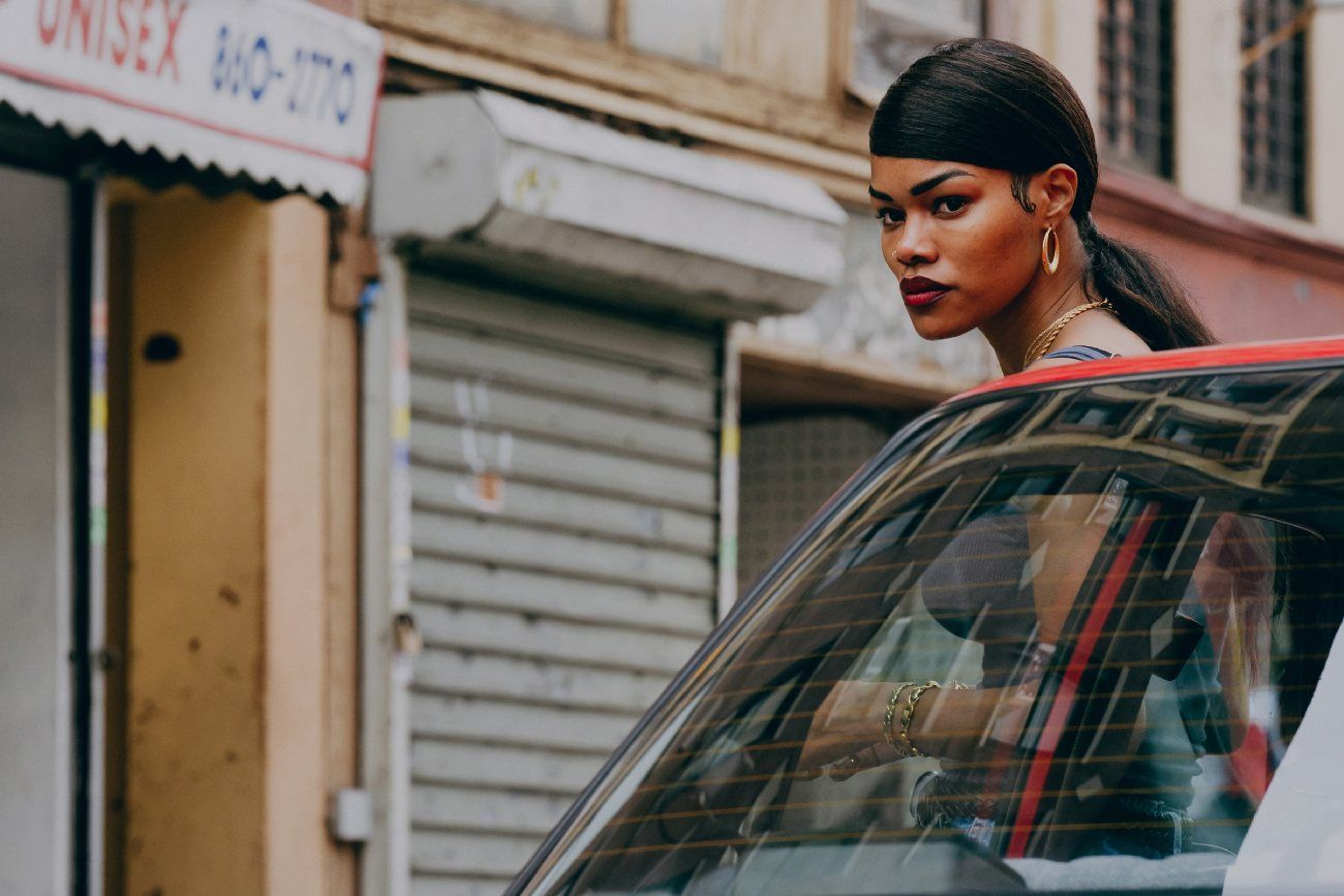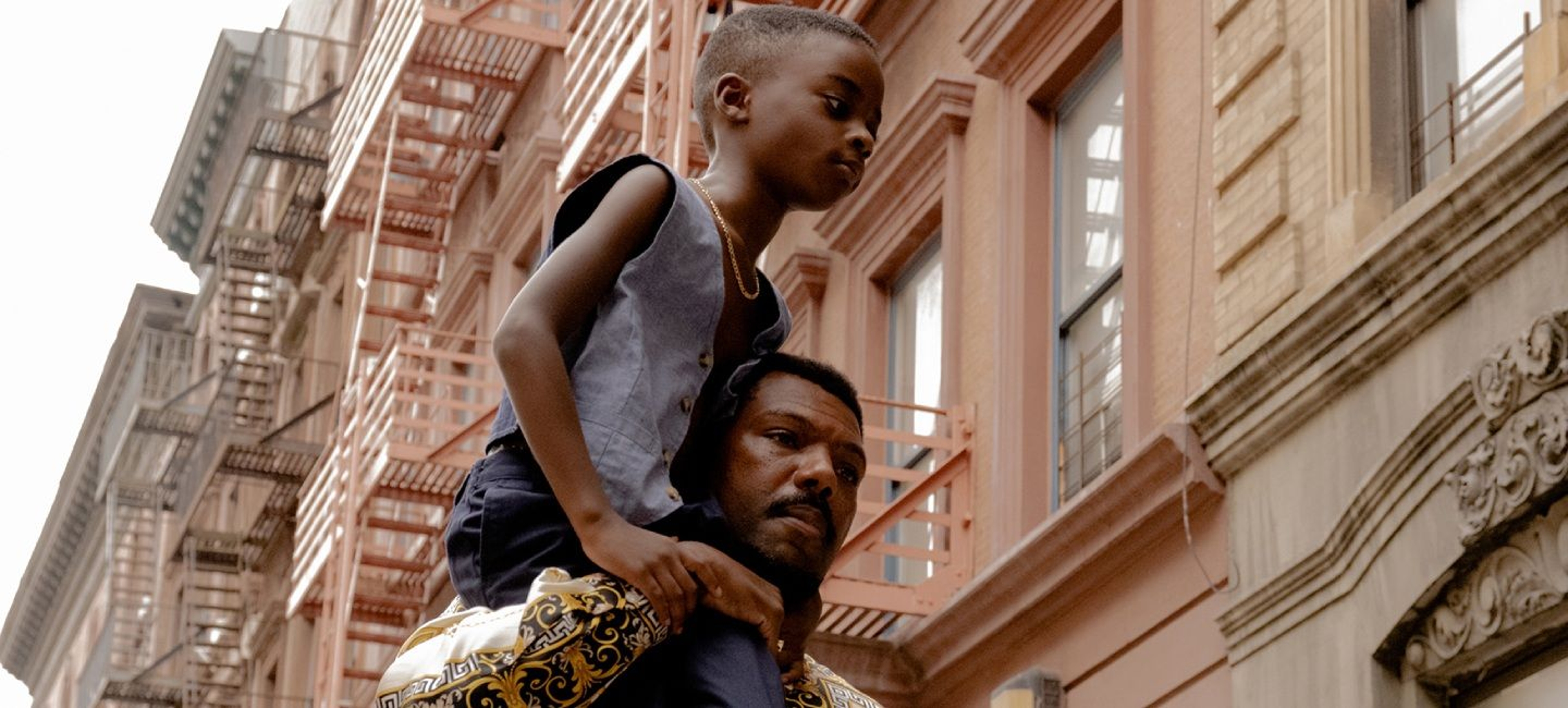In her award-winning debut feature A Thousand and One, writer-director A.V. Rockwell weaves a mesmerizing tale of struggle and resilience in New York City.
After kidnapping her son, Terry, from foster care, Inez (Teyana Taylor) resettles in Harlem, hoping to raise her family in peace. But as gentrification changes the neighborhood, Inez suddenly finds herself battling a city that seems to want to push her out.
Rockwell hired cinematographer Eric Yue to chronicle the subtle evolution of New York City from the 1990s to the 2000s. Framing Inez’s personal journal as a single mother alongside a dramatically changing urban landscape, Yue brings a distinct take to the tale. Deadline writes, “The way he shoots, you can tell he knows the city, and he knows Harlem because the neighborhood is captured in the most authentic way I’ve seen in a long time.”
We spoke with Yue about shooting different time periods, bringing an authentic look to Harlem, and encountering fans of Teyana Taylor on set.
The official trailer for A Thousand and One

Teyana Taylor as Inez in A Thousand and One
How did you end up shooting A Thousand and One?
I got involved with the film through A.V.’s manager, who manages my best friend, David Raboy, for whom I shot his first feature, The Giant. She saw that film and reached out to me. We started talking about the film, and she sent me the look book. We had a lot of overlap with being both from Queens. I think that created a shorthand for us, where both of us could ask, "Do you remember when this happened growing up?" That was really helpful for her.
Did you gain a sense of how you wanted to shoot the film from reading the script?
When A.V. first asked me, "How did you see this film being shot?" I proposed two different strategies. One was shooting the '90s section in 35 mm, then switching to digital when the story moves to the 2000s to give a sense of time and place aesthetically. We couldn’t do that because of budget concerns. So, I proposed shooting the '90s section on digital with more vintage lenses. That kind of filtration would give the '90s a gauzier look. For the 2000s, I took off the filter and used more modern lenses, making everything a bit sharper and a little cooler.
A.V. was adamant about not wanting to use practical lights—which are lamps or anything like that. In the interiors, all the light would be coming from the window. In certain scenes, A.V. wanted it to feel like evening, that post-sunset effect where everything is a bit blue. It created a very special look, but it was also a challenge because when it got dark, you couldn’t just turn on a lamp. We had to figure out how to make it feel dark without making things feel underexposed.
Harlem plays a significant character in this film.
That was definitely one of my notes when I read the script. We scouted a lot of storefronts and locations to get the look right, especially for '90s Harlem. We would find these pockets of Harlem that were unchanged or locate a wall with just the right patina. It was all about isolating those sections in the frame. The problem was if you pan the camera a little to the right, suddenly there’s a new deli or something else that was not part of the '90s in the frame. Some of the film was shot in Brooklyn, because we had to go to places like Brownsville or East New York to find streets that felt untouched from the '90s.
We also tried to designate different time periods by colors. With the '90s, we wanted a red or warm palette, so we scouted locations with those tones. For the 2000s, we looked for green or blue walls or other spaces that spoke to A.V.’s sensibilities.
In exterior shots, you use the background to great effect.
That was something we dialed into the frame. Using extras in the background adds to the feel of the neighborhood. When we researched the film, we focused on the urban style of the '90s. For example, reference photos often showed people hanging out on stoops in the summer. We tried to include all of that in the frame.
There's one shot of Lucky and young Terry walking down the street in a wide shot. To give it the grit of the '90s, the production design department dressed the shot so there was lots of debris and garbage in the frame. It feels pre-[Rudy] Giuliani. When we move to the 2000s, the shots naturally felt cleaner.
Was there a difference in camera movement between the different time periods?
A.V. and I talked about camera movement always coming from a place of character. In the '90s, many of the shots of Inez were hand-held, because she was a bit of free spirit, and her life was a bit chaotic and unstable. In the 2000s, her life feels more settled. Everything's on a tripod, and the shots are stable and locked down.
How did you use photography to recreate the look of the period?
We looked at lots of archival photography. One especially helpful book was Katsu Naito’s Once in Harlem. He's a Japanese photographer that moved to Harlem and documented the neighborhood in the '80s and '90s with black-and-white photography. In addition to being a great reference, one of his photos inspired a shot in the film. There’s a shot of Terry from a high angle that slowly zooms in on him. The angle of the shot came from a photo in the book where he was shooting the street from his window.

Josiah Cross as older Terry in A Thousand and One
You shot Inez and Terry’s apartment on a location. That must have been tight.
We had a three-bedroom apartment on the ground floor. We needed it to be on the ground floor because with anything higher, you have to put lights on lifts to reach the windows. It’s a lot easier to put lights on the sidewalk. The challenge was that the space itself was so small. It was a real New York apartment. We were there for 10 days straight. And in that tight of a space, people start to get cabin fever at a certain point. Not to mention that we shot in the middle of summer. But shooting in New York City can always be tough. You can permit the street, but if a car doesn't move, there is nothing you can do about it. If you're shooting a period piece and there's a 2015 Ford parked in front, you have to find a way to accommodate that.
The other thing that I hadn’t expected was how much attention Teyana received. She’s from Harlem, and everyone knows her. It was like LeBron going back to Akron, Ohio. She’s a hometown hero. Crowds would start forming with people whispering, "Teyana's here." Then all of sudden, there are paparazzi. A.V. and I come from this independent film world where you just want to grab a quiet street corner on which to shoot. On this shoot, crowds were always watching what we were doing.
Was there a specific scene you felt worked particularly well?
One of my favorite scenes is sort of unflashy in terms of photography. Terry is on a date at a Chinese restaurant. His date is putting a lot of ketchup on her french fries. They are talking about Quincy Jones. The scene is very simple, just a shot/reverse shot of their conversation. But there is something about their performance. It feels so real and innocent. We lit it very simply through the window, but you really connect with how their eyes are staring at each other. It’s a moment of levity and young love in the film.
What do you hope people take away from the film?
There's a review that said it’s “a love letter to mothers, sons, daughters, the hustlers, and displaced of New York City.” I think that's pretty spot on. For people that haven’t seen this story depicted or don’t understand the stamina it takes to be a Black woman raising a kid in New York with all the circumstances stacked against you—I feel that it's a film about resilience and rethinking what family is.
This interview has been edited and condensed for clarity.
